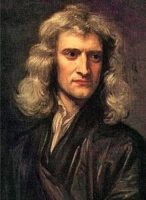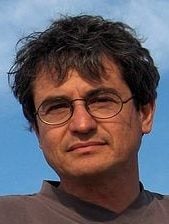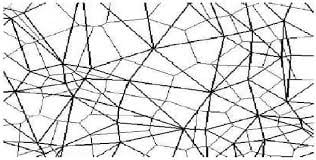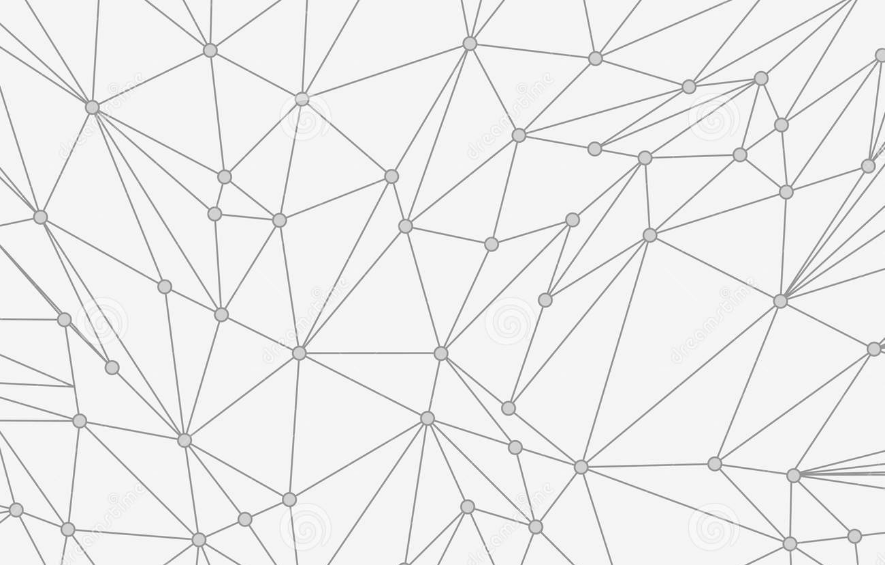This post is a sequel to my previous post, “Space – Between Future and Past.” For background information, the reader is referred to that post.
My second Shavuot “epiphany” was that space is relational. Not that I realized that space was relational for the first time – I always thought so. But, for some reason, thinking about the meaning of the four faces of Chayot, the “living creatures” – the angelic beings described in the prophecy of Ezekiel that we read on Shavuot – made it absolutely clear in my mind.

The debate about the nature of space goes back at least to the times of Newton and Leibniz. Isaac Newton believed (as it is apparent from his mechanics and as it was expressed by his friend, Samuel Clarke) that space is absolute and, therefore, one could speak of empty space. Gottfried Wilhelm Leibniz, on the other hand, believed that space is reducible to relations between objects. Isaac Newton imagined space as a background of the world, the stage on which the cosmic play unfolded, the canvas on which the painting was being painted.

Albert Einstein disagreed with Newton that space was rigid and absolute. According to Einstein, space was malleable and could be contorted and curved by motion and gravity. However, Einstein still imagined it as the underlying fabric of the universe – smooth and universal – and, in this sense, General Theory of Relativity presents us with absolute space that exists even in an empty universe devoid of any matter. I could never relate to this. Following Leibniz, I always thought that space is just a sum total of all relationships between different objects.
Imagine an empty universe or a universe with but a single particle in it. Could we really speak of space in this scenario? I don’t think so. There is no way to speak of the position of this single particle as there is no other particle to choose as the center of the coordinate system. There is no other object relative to which the position of the lone particle could be described. If there were at least two particles, we could speak of the distance between them, as we could connect them with an imaginary line. If there were three or more particles, we could connect each particle with every other particle, and measure not only distances between them but angles, as well.


Two theoretical physicists, Carlo Rovelli and Lee Smolin, both of whom I greatly admire, had the same idea as Leibniz. They took it much further and gave it a mathematical underpinning, spin foam. They recreated a geometry out of a mess of lines connecting every object with every other object in the universe.

Their relational spacetime became the foundation of quantum loop gravity, one of the leading contenders for a quantum theory of gravitation, the holy grail of theoretical physics.
As I said in my previous post, “Space – Between Future and Past,” the Z”A (Partzuf Ze’er Anpin), which is the spiritual source of our three-dimension space, corresponds to the letter Waw in the Tetragrammaton, which has the numerical value (gematria) of 6, corresponding to the six directions in three-dimensional space.
| Letter | Heb. Letter | Primary Sephirah | Partzuf | Time |
| Yud | י | Chokhmah | Aba | Past |
| Heh | ה | Binah | Ima | Future |
| Waw | ו | Six sephirot | Ze’er Anpin | Present |
However, the Hebrew letter Wav us just a vertical line – ו. To me, this visual shape of the letter corresponding to space is an indication that our three-dimension space is a network of lines connecting objects in space.
If that was not enough, let us look at the meaning of the letter Waw – ו. In Hebrew, the letter Waw (also, sometimes, transliterated as Vav) is a connector – its literal meaning is “and.” For example, when we want to say, Rachel and Leah, we say in Hebrew Rachel v’Leah with the letter Waw (pronounced as “v”) serving as the conjunction “and.” So, in this semantic sense, letter Waw is a connector graphically represented by a line. When we have multiple objects in the universe – object 1, object 2, object 3, etc. – interacting somehow with each other, we group them together by saying object 1 and object 2 and object 3, etc. In Hebrew, use the letter Waw written as a vertical line instead of the English “and.” If we connect three non-colinear objects together with straight lines, letters Waw, we get a triangle. If we connect four non-coplanar points with straight lines, letters Wav, we get the 3-simplex or tetrahedron. This is a vivid representation of how objects in the universe are connected by imaginary lines representing interactions between the objects (in physics we call it “coupling”). Out of all these lines, space is born.
In my previous post, “Space – Between Future and Past,” I wrote that space exists “between” the future and the past and is identical with the present moment. If so, space is recreated with each new moment.
You may be wondering, how can our space be recreated or “refreshed” every moment? If space were a canvas, replacing the canvas gets rid of the painting! Similarly, if space were a container for the objects in it (container is a common metaphor for an absolute space), destroying the container would destroy all the objects in it! We don’t see it happening, however – the objects don’t disappear every moment. Now we can understand why.
If space is nothing more than a set of relations between objects, recreating such space simply means updating these relationships. If objects move around from one moment to the next, one line would become longer, another shorter, some angles between the lines would change; all geometric relationships would get updated without touching the objects themselves. Refreshing connections between objects does not destroy the objects.
What is the nature of these lines that make up space? Lines represent relations between objects. Furthermore, since the letter Waw means a connector, it hints at the nature of these relations as connections. As I suggested earlier, these relations or connections represent physical interactions between objects. But what interactions?
My further “epiphany” was the realization that these lines represent a gravitational pull. Indeed, gravity is a universal interaction in the sense that all objects have energy/mass and, therefore, exert (and react to) a gravitational pull. Thus, space is gravity, and gravity is space.
It is often said in popular literature that Einstein equated spacetime with gravity. In my opinion, this is not correct. General Theory of Relativity is formulated on top of preexisting differential pseudo-Riemannian manifold. According to Einstein, the gravitational field equations model gravity as the curvature of the spacetime – mass curving the fabric of spacetime. In the words of John Archibald Wheeler, mass tells space how to curve and space tells mass how to move. Gravity, according to Einstein, is the stretching and bending of the fabric of spacetime, but not the fabric itself. In my formulation of the General Theory of Relativity that I proposed in 1979, gravity was described as the Affine deformation of the fabric of spacetime. Either approach assumes the prior existence of spacetime as the background for the gravitational field.
I now think that gravity is space itself (not four-dimensional spacetime, but three-dimensional space). Not the smooth space of the General Theory of Relativity, but the discrete space made up of a mesh of lines connecting all objects in the universe.
All of this I understood while thinking about angelic beings, Chayot, and their four faces in Ezekiel’s prophesy, Maase Merkavah that we read on Shavuot.


“Not the smooth space of the General Theory of Relativity, but the discrete space made up of a mesh of lines connecting all objects in the universe.” The first thing that came to mind when I read this was… ah, the Malbush!
Can you work out the math for your hypothesis, and then devise an experiment to test it?
Working on it. :-)
I really liked this: “If space is nothing more than a set of relations between objects, recreating such space simply means updating these relationships.”
I had my own epiphany on shavuos, getting a year older and also while reading Being Mortal (fabulous book btw), that what makes life meaningful is one’s relationships. We only take up space on this earth in as much as we have relationships with others around us.
Otherwise a human lifetime is a meaningless blip of existence. Not so different from what you’re saying, I think.
The fundamental nature of relationality and its priority over materiality relates to the philosophical work of James Filler at the University of Grorgia on the primordiality of relation in ontology. There is the relates idea that spacetime is not the true nature of reality but is an abstract product of thought as part of the evolved human-specific interface with the hidden relational reality which is that of the quantum substratum. The relations take priority over the relata. The relata are the abstractions, not the relations. Nominalism claims that only the relata are ‘real’ and the relations are mind-dependent impositions. This is misleading and incorrect when one recognizes that it is meaning that is fundamental and originary. The relations signal the meaning. This becomes apparent when one realizes that everything operates on the basis of transaction involving an interchange of mass/energy/information, and thus that communication is foundational and real.
…which is all in congruence with the Transactional Interpretation of Quantum Physics. Space-time is a fabricated fabric constructed through the occurrence of transactions that are ‘negotiated’ through exchange of ‘offer waves’ and ‘confirmation waves’ between the communicating entities, the ‘emitter’ and the receiving ‘absorber’… this is the way our ‘interface’ with the hidden relational reality of the quantum substratum works. See: Kastner RE. Transactional Interpretation. A Relativistic Treatment’ published by Cambridge University Press…